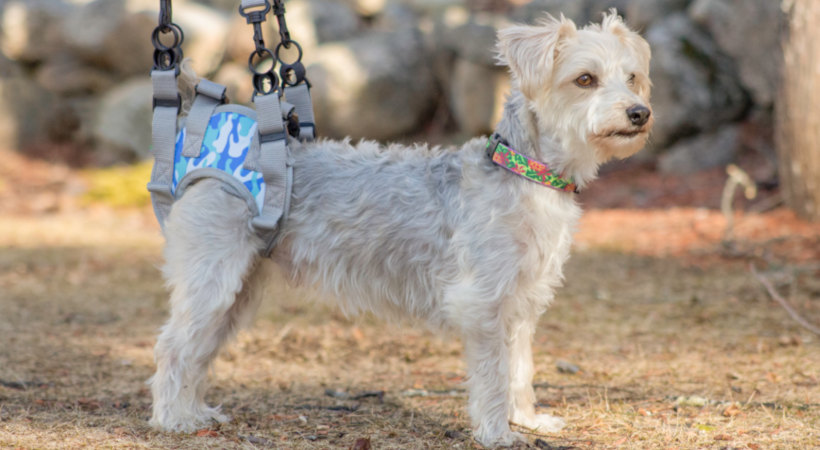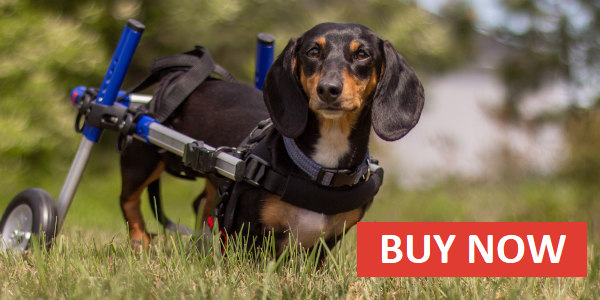- October 11, 2023
Dog Surgical Recovery & Support

Bringing your pet for surgery can be a scary experience. During the procedure, you may feel anxious about their health, and once they are reunited with you, the process of healing begins. What steps can you take to help your dog recover?
How to Care for Your Dog After Surgery
After your dog undergoes surgery, the best course of action is to ensure that they get plenty of rest. Your veterinarian may recommend placing them on crate rest and limiting their movements to aid in their recovery. It is important to adhere to the vet’s recommended timeframe for crate rest, even if your dog appears to have healed or wants to become active. This is crucial to allow for optimal healing. If crate rest is not recommended, it is still important to keep your dog calm and relaxed for about a week after surgery. Limit playtime and take short walks to prevent them from overexerting themselves.
Your Pet’s Mobility During Recovery
It’s crucial to adhere to your vet’s instructions during the recovery process. Even if your dog is on crate rest, they will still require trips outside to relieve themselves. As a result, it’s important to find a safe way to assist your dog and limit the strain placed on them.
Safely support your pet

If your dog has undergone leg, hip, or back surgery, it is important to provide them with specialized support. A lifting harness or support sling can be useful in reducing pressure on their legs and assisting their movement.
Consulting with your veterinarian can help you determine the best support harness that won’t cause irritation or discomfort to the surgical site while providing proper support to the affected area of your dog’s body.
Can a dog wheelchair help a dog heal?
After receiving the veterinarian’s approval, a dog wheelchair can effectively restore your dog’s independence following surgery. The wheelchair is an ideal addition to your pet’s rehabilitation program, allowing them to walk with the added support of the cart.
Items to Consider for Post-Op Care
- A playpen: Your dog will most likely need to be confined post-surgery. It is optimal to have a gated area for your dog to be safe, comfortable, and somewhere you don’t have to worry about them moving around!
- An E-cone helps prevent your pup from licking and investigating open wounds when worn. Many dogs hate the E collars, but plenty of alternatives are on the market. The No-Cone Collar fits snugly around your dog’s neck and is more complicated for your dog to get off without impairing its visibility!
- Try a support sling to help your dog get up and take the weight off their joints when you take them out to go potty.
- If your dog has had any spinal surgery, the Walkin’ vertebraVe will stabilize the spine and alleviate pressure, allowing more support, and can be worn all day. The Walkin’ vertebraVe is fully adjustable, so you modify it based on how your dog heals.
- A puzzle toy: Being cooped up is boring! Your doggo will need mental stimulation so they don’t try to escape the crate or get worked up and risk injuring themselves further. A snuffle mat is great to hide treats in, so your pup gets a little brain exercise!
- The most crucial post-op treatment is all of the love and snuggles you can give!
Every dog’s surgery recovery will be different, so it is important to follow your veterinarian’s instructions carefully! Before the surgery, ask questions so that you will be as prepared as possible, and the Vet office will always be just a phone call away if you need assistance!

Related Articles:
Tags
What do you think?
Related Articles

New Puppy Checklist: Gear You’ll Need for Your New Dog
Getting a new puppy is really exciting, but before you welcome them home, it’s important to prepare your space for them. Since puppies need a

How Big Do Mini Poodles Get? Vet Reviewed Average Weight & Growth Chart – Dogster
The information is current and up-to-date in accordance with the latest veterinarian research. Learn more » When you buy a Miniature Poodle, you might not

Can Police Dogs Smell Nicotine? Vet Verified Facts & Info – Dogster
The information is current and up-to-date in accordance with the latest veterinarian research. Learn more » While cigarette sales have been declining steadily for decades,

How Old Is 5 in Dog Years? Vet-Approved Guide to Each Size of Dog – Dogster
The information is current and up-to-date in accordance with the latest veterinarian research. Learn more » A common method for calculating a dog’s age is

